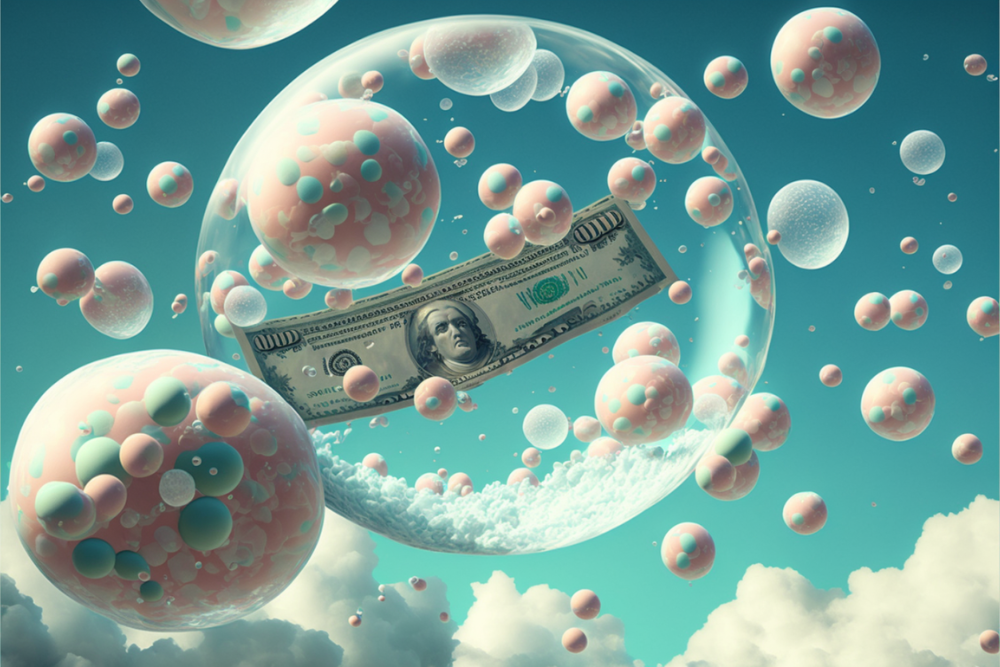It finally seems as if we can breathe again, as inflation has continued to cool for about half a year now.

Yet many, such as Martin Bate, who is a transport planner at Fort Worth, felt that they were constantly seeing their finances diminish as the cost of necessities such as food, rent, and gas were beyond excessive.
Mr. Bate says, “My finances felt as tight as they did when I was just about to finish college.” Even so, he received a 12 percent raise on top of a promotion that has been able to help with his expenses. He’s also been able to get a better living place as rentals have started to go down.
“It feels as if it’s getting much better out there.” Mr. Bate continued as he felt cautiously optimistic about the economy.
There were moments both in 2021 and 2022 where it seemed that the costs and inflation would go down, only to go up again. Yet now it seems that it’s safe to say the trend is heading downwards.
Inflation has gone back down to only 6.5%, far from its peak of 9 percent over the 2022 summer. Even so, consumer prices increased by about 0.3%, but not as fast as the peak of 0.9%.
Now, many wonder what the future holds and what actions will be taken, if any.
Economists have opposing views on whether inflation will increase again or quickly dissipate. All of this matters because the Federal Reserve is using this information constantly to see if it will continue its rapid interest rate increase that has already hurt the economy. Current trends have the Federal reserve reducing yet not eliminating a rate increase at their meeting happening towards the end of January. Instead, they are looking to raise the rates between a quarter point to a half point.
Lorie Logan, who is the President of the Federal Reserve Bank of Dallas, said, “It’s just like how you want to slow down your car when you have hazardous road conditions, just to be safe.” As a result, many feel that “the pace should continue to slow down at this next meeting.”
Regardless of the outcome of the next meeting, many experts are saying that years will pass before the typical annual increase of around 2% comes back. Some with a more positive outlook on Wall Street believe that inflation will take a steep dip.
The Fed itself is waiting for some additional data related to inflation, which is the Personal Consumption Expenditures Index. Current expectations have it only up 5% for December, which is half a percent less than in November.
With the experts and their thoughts out of the way, it’s really important to look at how this will affect everyday Americans. If the Fed continues its hikes, it could slow the economy down to a point where a recession happens, costing jobs. Yet if they don’t manage it properly, family budgets that are already weak will continue to break.
Karen Loeb, an adjunct sociology professor at Amherst, Mass, stated, “The current future outlook seems concerning.” She’s been saving by being thrifty and baking more.
The information continues to be mixed as the price of houses increases, but rentals increases are slowing down. The price of cars, both used and new, are finding relief as inventory levels continue to go up. Other goods that skyrocketed, especially due to pandemic shipping costs, have started to get back to their pre-pandemic price levels.
Many consumers were purchasing more during the pandemic as well, so it wasn’t just supply issues but a growing demand that led to inflation on these goods. The government stimulus checks also helped to fuel the spending, combined with funds saved during lockdown periods. Yet savings have effectively been hit, slowing down demand.
Omair Sharif, the founder of Inflation Insights, had this to say, “It seems that there’s both a shock in demand and supply that has happened, which hopefully eventually sets us back to some form of normal.”
Christopher Waller, one of the Fed Governors, said recently that many goods are slowing down with respect to price increases, where more categories are falling below the 3% inflation line.
There are still areas of concern because it’s always a balancing act of whether bringing down inflation will be fast enough to get the economy to a 2% inflation rate, which is the end game and final goal for the Fed to begin with.
But risks remain as it’s not apparent whether the forces now dragging inflation down will be enough to quickly return prices to an annual pace of 2 percent, the Fed’s goal.
What’s more likely to happen is volatility in the short term. But, according to Mr. Sharif, even an increase in medical costs, with higher reimbursements by Medicare, could work to push inflation up fast in the next few months.
Even the latest predictions from the Fed see that the key indicator, which is the Personal Consumption Expenditures Index, will still be well above the 2% point both in 2023 and 2024. It’s estimated to end at 3.5% by year-end 2023.
This could be because of also how strong the job markets have been and wage increases. Wages don’t go up as fast as they usually have, but companies are able to afford it and do so to retain their employees. This leads to a cycle where the cost of goods will also go up from these companies to help cover these wage increases. Meaning these prices could simply be here to stay.
Many still expect rates to increase just a bit higher and keep them that way through 2023. This should help reduce borrowing and slow down spending. This demand helps to cool down the economy and the job market at the same time.
This is already happening with the growth of wages, and another report, The Employment Cost Index Report, will be seen by the Fed before the decision to increase rates are made.
Even with this boom in the job market, the Fed still believes that unemployed will go just under 5% to 4.6% by the end of the year, up from the 3.5% it is at now. The Fed feels it looks like a softer landing, even if some households are negatively affected.
Lawrence H. Summers, Former Treasury Secretary and economist from Harvard, has even stated that America is looking better at avoiding a long recession, where previously he felt that the economy would tank.
Mr. Summers said, “we’re looking better and better at getting our soft landing.”
However, investors feel less optimistic about the economy, with many feeling that it will go down a lot, as they wish for the Fed to reduce the rates before the end of 2023.
Yet in the end, it’s hard to tell what will happen down the line. There are so many variables that can shift the economy one way or another, whether it’s the Ukraine conflict, the debt ceiling, or even a hike in the price of oil and energy.
Mr. Sharif stated, “it feels like we’re diving headfirst and cannot see what’s up ahead. So while there are signs of returning to stability, it’s been difficult.”





